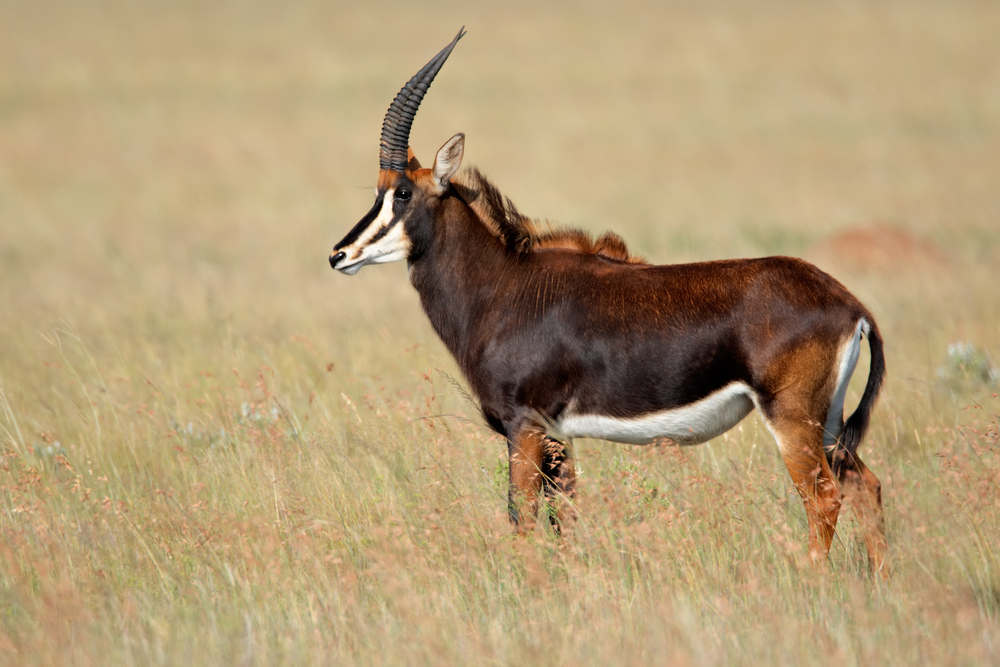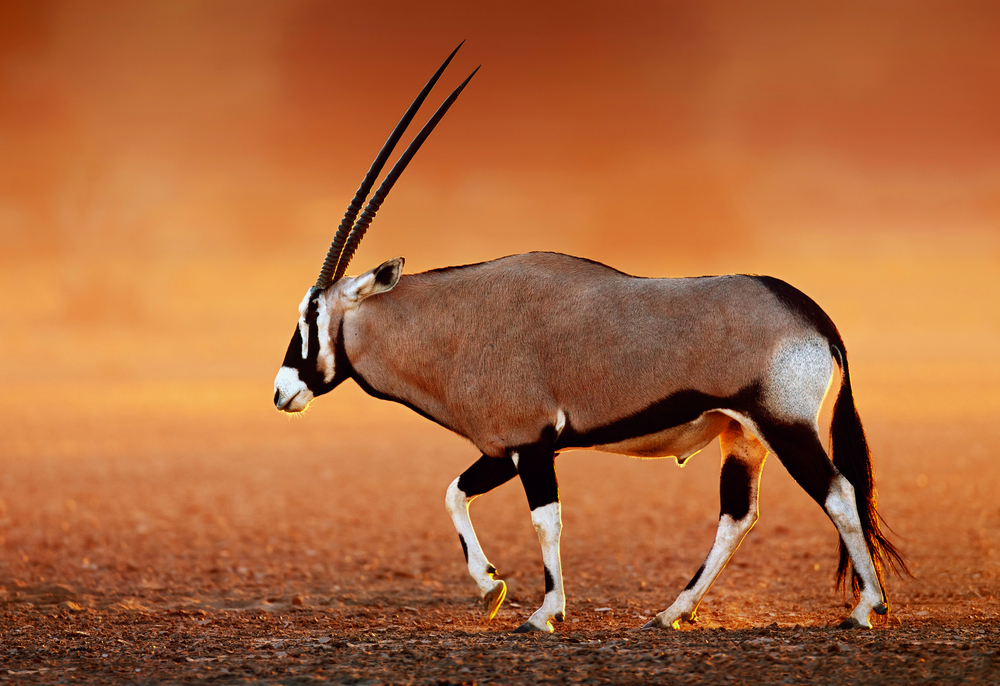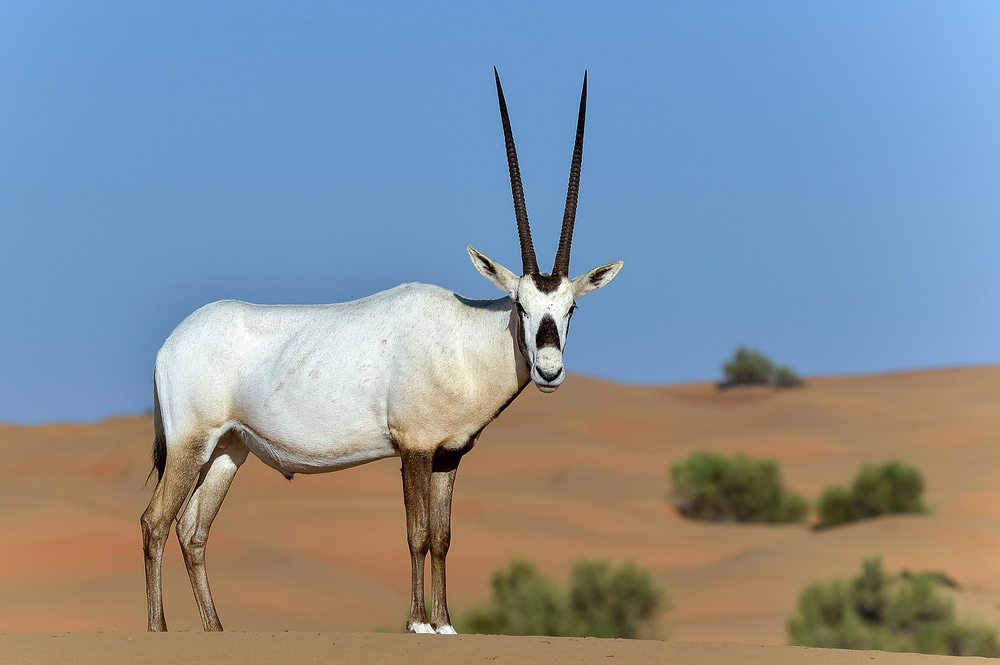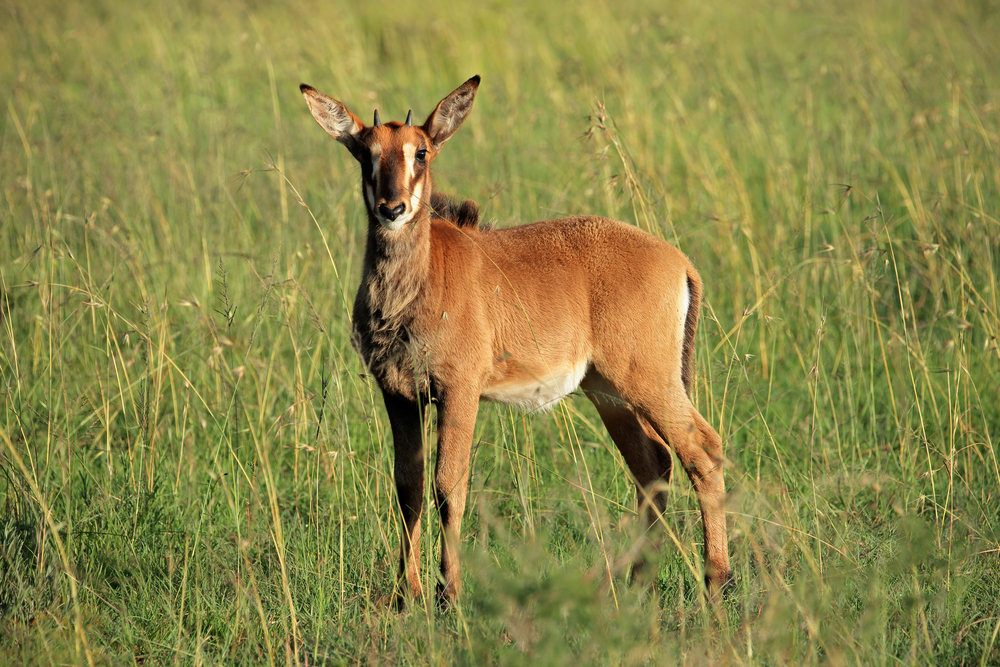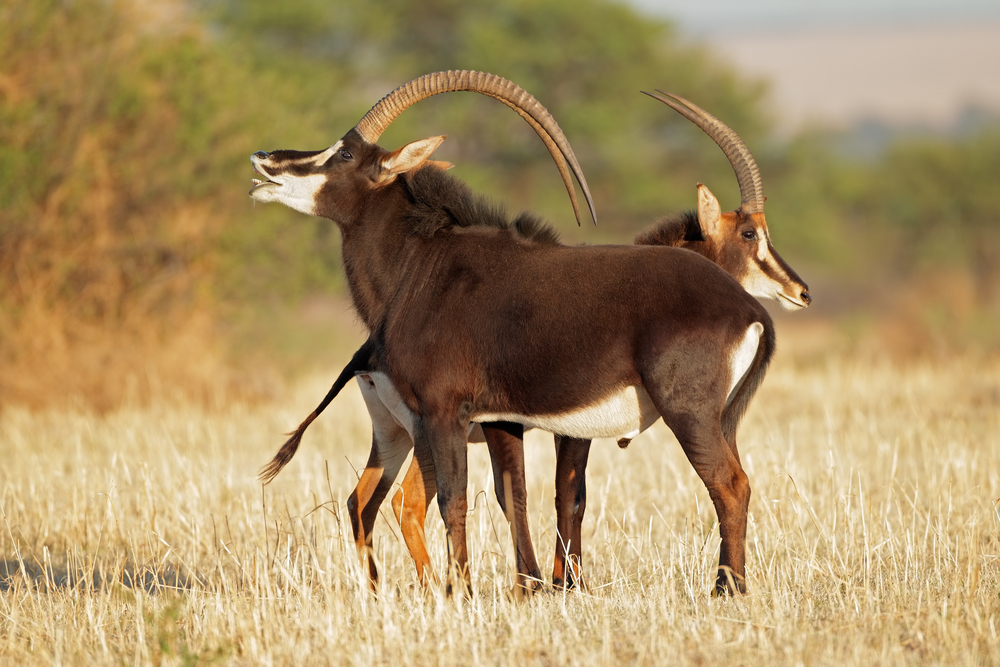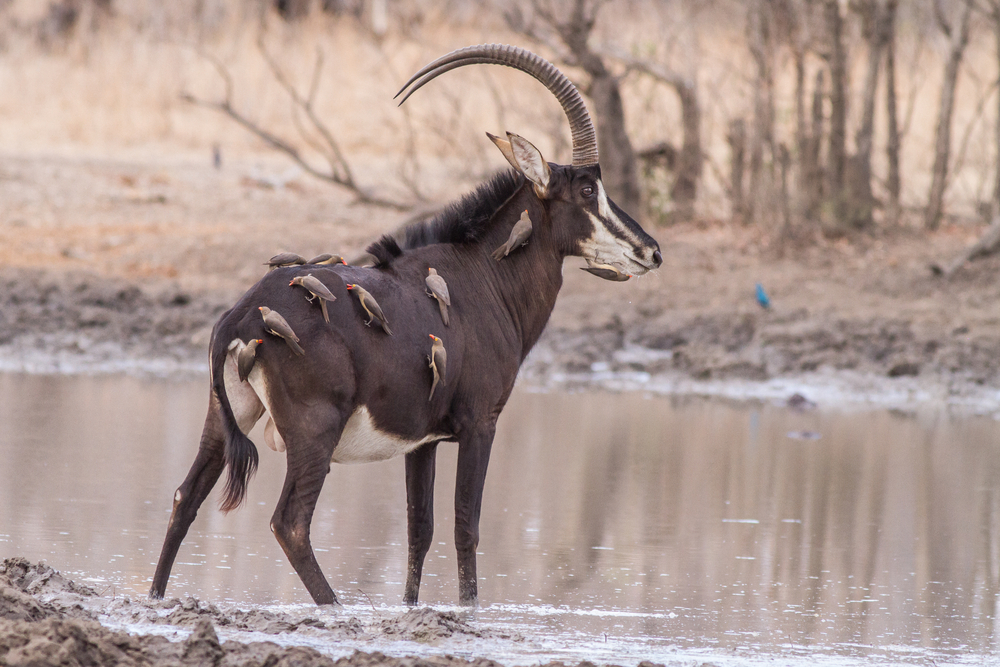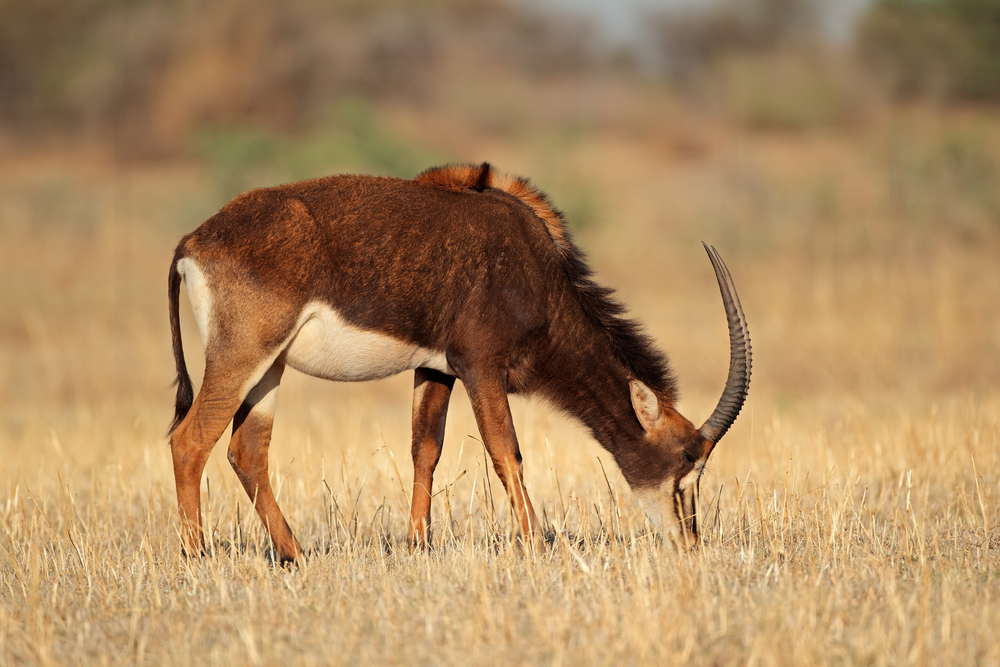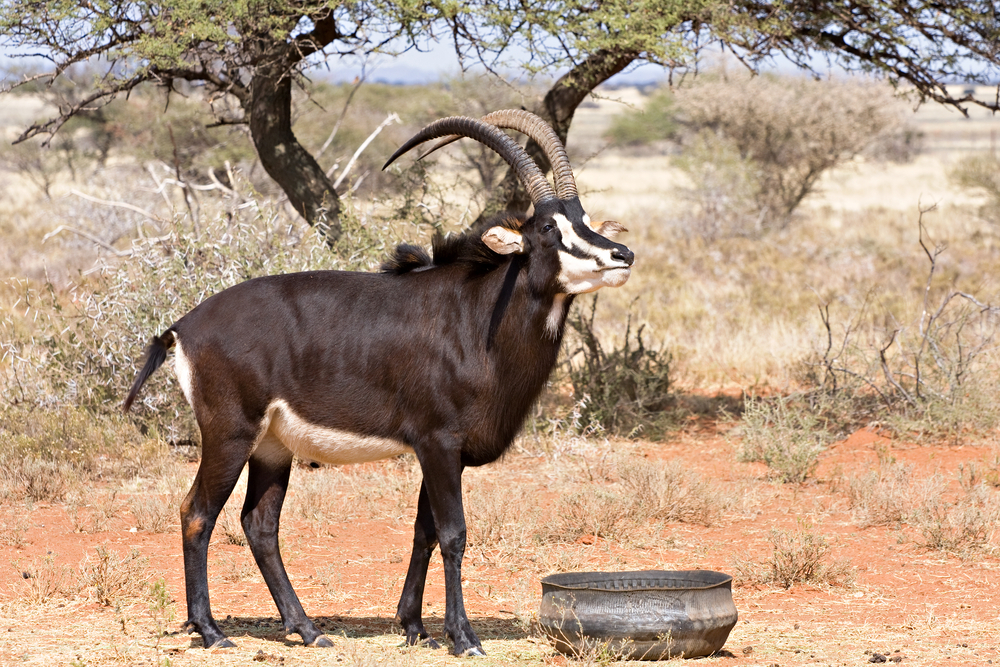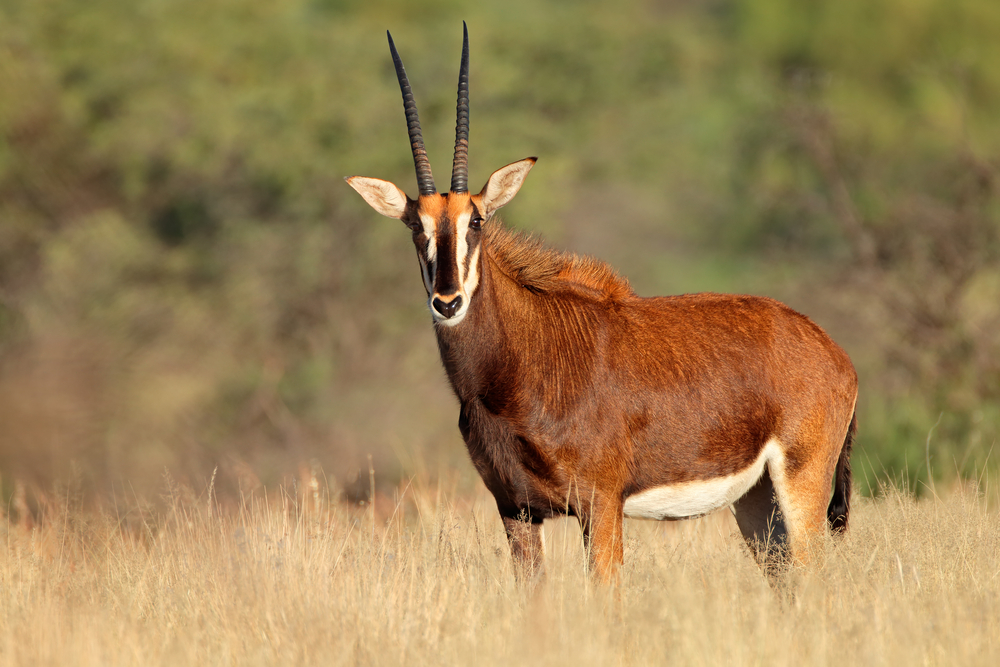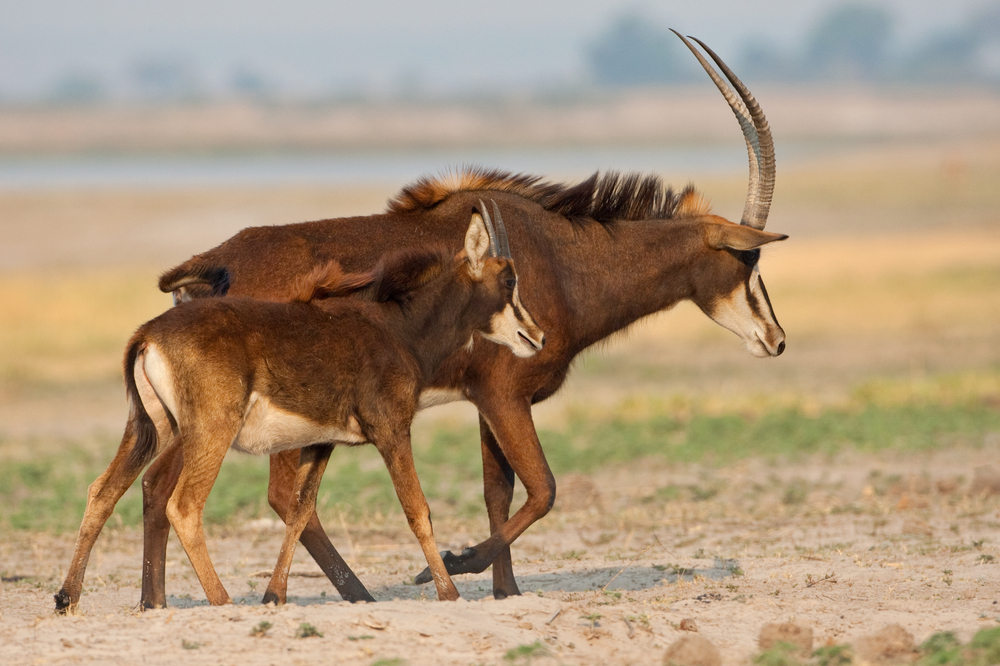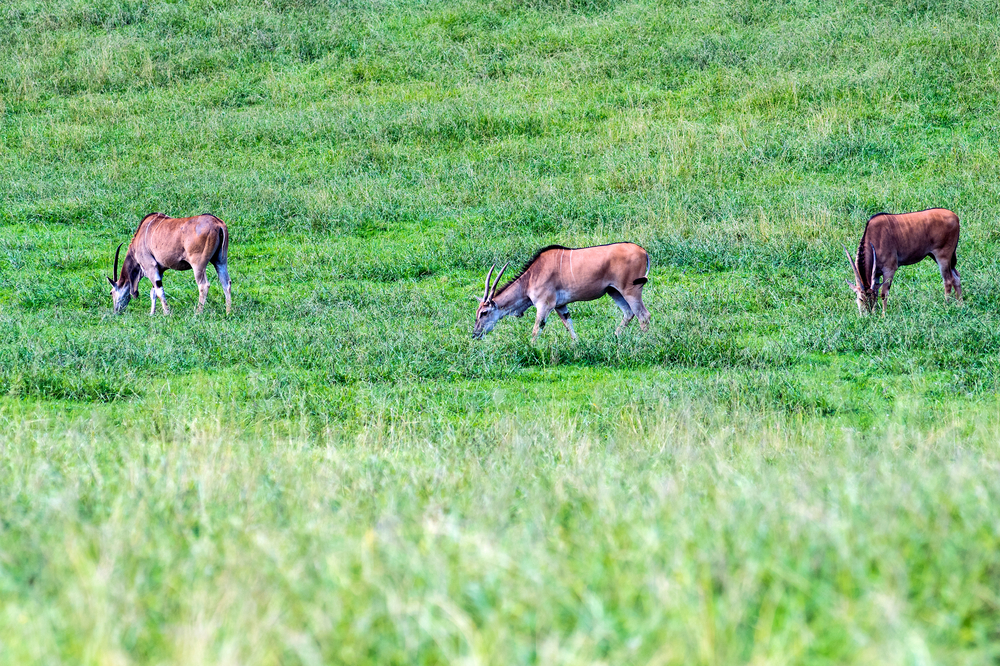Sable antelopes (Hippotragus niger) possess several distinctive characteristics and behaviors that set them apart from other antelope species. Here’s a comparison of Sable antelopes to other antelope:
1. Horns:
- Sable antelope males have exceptionally long, scimitar-shaped horns that sweep elegantly backward, making them easily distinguishable. Their horns can reach lengths of up to 65 inches (165 centimeters), making them some of the longest horns among African antelopes.
- In contrast, many other antelope species have shorter or differently shaped horns, which vary in size and shape between species.
2. Coloration:
- Adult male Sable antelopes are known for their jet-black coat, which is relatively rare among African antelopes. This dark coloration contrasts dramatically with their white facial markings.
- Most other antelope species have different coat colorations and patterns that help them blend into their respective habitats.
3. Sexual Dimorphism:
- Sable antelopes exhibit significant sexual dimorphism, with males being notably larger and heavier than females. This difference in size is more pronounced compared to many other antelope species where sexual dimorphism may be less evident.
4. Feeding Behavior:
- Sable antelopes are selective grazers that prefer tender grass shoots, showcasing a specific feeding behavior. Their dietary preference sets them apart from other antelope species with different feeding habits.
5. Behavior During Mating Season:
- During the mating season, dominant male Sable antelopes engage in fierce battles to establish dominance and access to females. These confrontations are known for their intensity and physicality.
- While other antelope species also engage in mating rituals, the unique battles of Sable antelopes are particularly noteworthy.
6. Habitat Range:
- Sable antelopes are adaptable and can inhabit a range of ecosystems, including woodlands and savannas.
- Other antelope species may have more specific habitat requirements or preferences.
7. Cultural and Conservation Significance:
- Sable antelopes hold cultural and conservation significance, representing the need for conservation efforts in Africa due to habitat loss and poaching threats.
While Sable antelopes share certain traits and behaviors with other antelope species, their unique combination of size, coloration, horn structure, and behavior distinguishes them as a remarkable and iconic species in the world of African wildlife. These distinctive features contribute to their appeal and importance in both cultural and conservation contexts.






























































